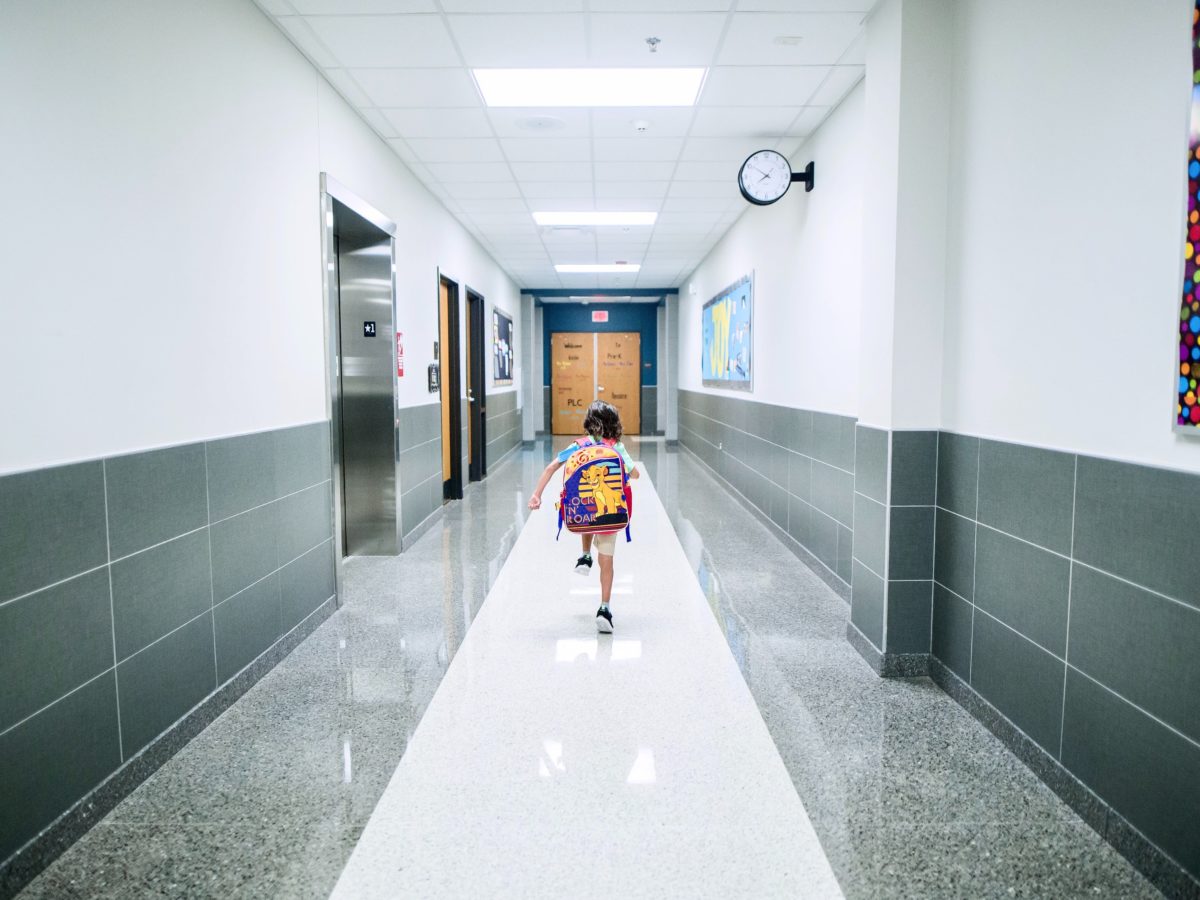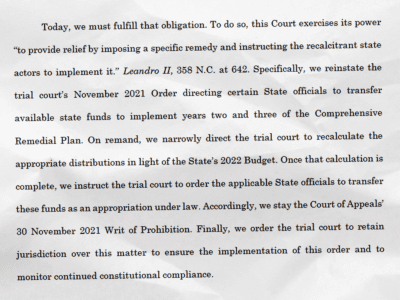
Along with casting ballots to determine rosters of state and local education decision-makers, voters in 16 North Carolina counties and municipalities in 2022 approved bond issues adding up to $4.27 billion. Of that total, $3.08 billion will fund new K-12 public school construction and improvements to existing facilities.
Each locality has its own story of the dynamics of the bond referenda. Still, it’s worth examining the 2022 referenda results in the context of statewide school needs and of the political atmosphere after two years of a burdensome pandemic. What did not happen deserves attention.
School-bond referenda took place in core metropolitan counties and in adjacent burgeoning suburbs. In the November general election, across the Research Triangle region, Wake approved $530.7 million, Durham $423.5 million, and Johnston $117 million. Pender County, near Wilmington, approved $178 million, while Union County, just east of Charlotte, approved $134.4 million. Wake, Durham, and Union also passed bonds for community colleges.
Earlier this year, Guilford County adopted a $1.7 billion school bond issue. Mecklenburg County, where voters endorsed a $922 million bond package in 2017, is preparing for another school bond proposal in 2023.
Clearly, growing counties with strong tax bases are stepping up to expand and modernize educational space. What they are doing follows the long-standing division of responsibility in public school finance in North Carolina: State government pays basic salaries and operation expenses; local government finances school facilities. (The Office of State Treasurer has a division that monitors local government finances and provided the data on 2022 bond referenda.)
In today’s North Carolina geography and economy, however, the upshot is to leave a growing list of facility needs unmet, especially in distressed counties with weak tax bases. Every five years, the Department of Public Instruction conducts a facility needs survey. The 2015-16 survey reported $8 billion needed for new construction, furnishings, renovations, and land. According to the 2020-21 survey, schools’ needs had risen to $12.8 billion.
How to respond has been among the points of contention between Democratic Gov. Roy Cooper and the Republican majority in the General Assembly. Cooper proposed putting a multi-purpose $3.9 billion bond package on the 2020 elections ballot, with $2 billion designated for schools, noting that two decades had gone by since the state issued bonds to address local school facility needs. Taking the less expansive approach of setting aside funds from biennial revenue, the legislature most recently transferred $431 million in lottery proceeds to a needs-based school-building fund.
The 2022 elections did not revolve around the great education debate in North Carolina, though the outcome in legislative and judicial races augmented Republican strength in state government. What’s more, the 2022 elections may not have diminished the persistent polarization defining American politics.
The COVID disruption cost K-12 students valuable learning time, and it exacted a cost to schools in public trust. The Hunt Institute recently released a report that nearly half of voters and parents surveyed nationwide say their confidence in public education has eroded since the viral outbreak.
In a toxic political atmosphere, bond referenda could have become opportunities for venting discontent. But no assault sidetracked the 2022 referenda in North Carolina counties and cities. Every bond proposal put on a ballot passed; none was defeated.
Indeed, most were adopted by solid majorities. A few examples: In Wake County, 71% of voters approved, in Johnston 64.8%, in Union, 62%, in Pender 53%.
Prudence cautions against over-interpreting referenda in 16 local entities. Still, even when it may cost them somewhat more in property taxes, solid majorities of residents of growing counties gave their consent to financing schools, parks, sidewalks, and other infrastructure that sustain their locale as a place where they want to live. In North Carolina, these 2022 results at the ballot box point anew to a tacit civic acceptance of the relationship between public education and community vitality.




